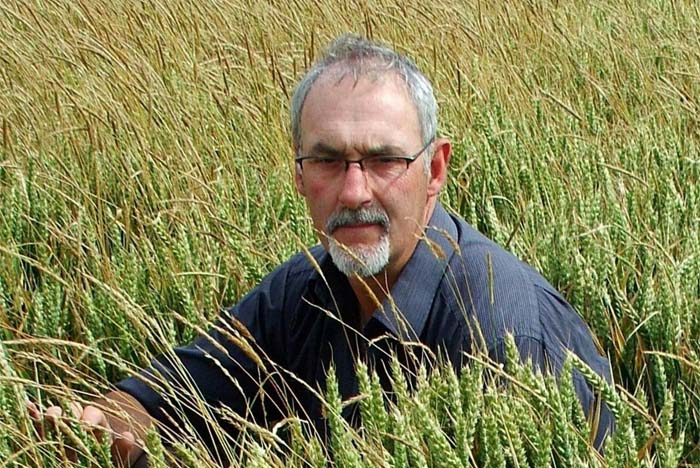
With the prospect of a late harvest looming, growers need to resist the temptation to rush crops in this autumn if they are to stand any chance of tackling the burgeoning grassweed problem in UK cereals, according to crop protection specialists Hutchinsons.
The relatively narrow window between harvest and drilling may tempt many to overlook cultural grassweed control methods such as stale seedbeds and instead place overreliance on already stretched chemical options, the firm’s technical manager Dick Neale says.
But doing so will store up future problems and he urges growers to fundamentally change their approach to grassweed control, particularly for blackgrass. “If we blindly drill from mid-September onwards, we could be in a real mess next year,” he warns.
“We’re currently living with populations of blackgrass that are unsustainable and our cultivation practices and trend for early drilling is continually selecting super-weeds that are more competitive than in the past. For example, in 1990 Rothamsted research suggested one blackgrass seed would produce four heads, but by 2009 that had increased to nine heads and now we’re seeing one blackgrass plant established through November producing up to 15 heads.”
Blackgrass is also spreading to areas where it previously was not an issue, such as Scotland, and the efficacy of the main chemical option – Atlantis (mesosulfuron-methyl and iodosulfuron-methyl-sodium) – is falling as more cases of Enhanced Metabolism Resistance (EMR) occur where growers have over-relied on the chemistry in the past, he says.
“But at least with EMR resistance, if we can take the chemistry out of the system for three or four years, there is a good chance it may work well again when brought back in as part of a sustainable grassweed control strategy.”
Maximise cultural options
More than simply supporting herbicides, Mr Neale says cultural control should form the backbone of any blackgrass strategy, with particular emphasis on stale seedbeds and cultivation type.
Where blackgrass is a major problem, he suggests growers should aim to get at least three or four stale seedbeds in between harvest and drilling. “If this means you have to drill a bit later, then so be it. Maybe you will lose some yield from later drilling, but that’s got to be better in the longer-term than drilling early and getting the same, or worse yield penalty from a field that’s full of blackgrass – and spending £120/ha trying to control it, but failing.”
Trials at Hutchinsons National Blackgrass Centre of Excellence near Brampton show that shallow cultivations immediately behind the combine to a depth of no more than 50mm work best to encourage blackgrass germination in a stale seedbed. Growers should ensure all soil is cultivated and include a second angled pass where machines with wide tine spacing (e.g. pigtail tine) are used. Land should then be rolled once, maybe twice, to conserve soil moisture and encourage blackgrass germination.
“The key then is to never let blackgrass get too big before you spray it off,” he advises. “Never let it get bigger than two leaves as this prevents the build-up of root exudates in the soil which can stop the germination of further blackgrass seed.”
For spraying off stale seedbeds he recommends 360g a.i/ha of glyphosate plus adjuvant, or alternatively 1litre/ha glufosinate-ammonium. “It is more expensive, but we can’t expose blackgrass to multiple doses of glyphosate without potentially adding to resistance pressure in the long-term. The benefits outweigh any extra cost.”
Ploughing may be an option in some instances, especially where there is likely to be a large amount of blackgrass seed returned to the stubble post-harvest. “In these cases, ploughing is a worthwhile ‘clean start’ option, but as a long-term strategy it can be flawed as you end up ploughing-up problems again next year.”
Spring cropping is no silver bullet
Spring cropping problem fields is often seen as an answer to alleviating blackgrass pressure, but in many cases growers are left disappointed, Mr Neale says. “Spring cropping gives you extra management time, but unless you make the most of that time by getting in as many stale seedbeds as possible you are simply delaying problems until spring. As soon as you disturb the soil in spring, blackgrass will germinate and in many cases it can then be harder to control.”
In addition, much of the worst blackgrass is on heavy land which does not lend itself to spring cropping, adds Midlands Cropwise agronomist Andrew Wright. “If you were going down the spring cropping route it would mean having to get a stale seedbed in February or March, which you just can’t do on a lot of land. Even for autumn sowing in this area [Leicestershire] you can happily drill until early or mid-October, but you wouldn’t really want to leave it any later than that.”
While herbicide resistance is not a major issue in his area, he believes blackgrass is generally becoming more prevalent and is getting harder to control on both heavy and light land. “It’s emerging all year round now, so whenever you move soil you’re likely to get a flush of blackgrass. It’s no longer confined to that relatively brief flush 12 days after drilling to the 12 weeks after autumn drilling.”
An added dimension to blackgrass control this year is the amount of fallow ground following the failure of 85% of oilseed rape crops in his region, Mr Wright notes. “People are treating this fallow land as a stale seedbed ahead of getting crops in by mid-September. But if that’s the case you’ve got to manage the stale seedbeds correctly between now and drilling to get at least three kills of blackgrass or more if possible.”
